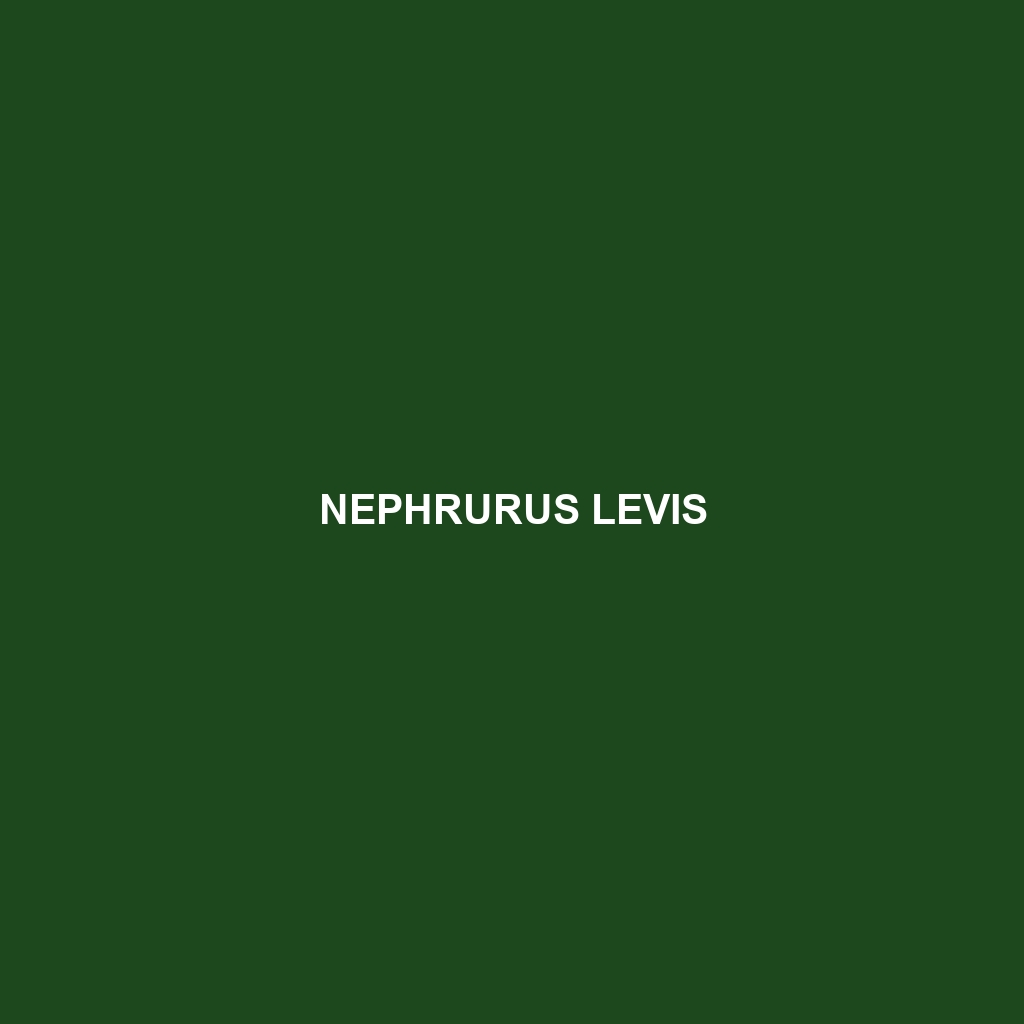Common Name
Nephrurus levis
Scientific Name
Nephrurus levis
Habitat
Nephrurus levis, commonly known as the smooth knob-tail gecko, is primarily found in the arid regions of Australia, particularly in the eastern parts, including New South Wales and Queensland. This species favors habitats that include savannas, woodlands, and open scrublands. These geckos thrive in environments with sandy or loose soils, enabling them to burrow effectively. The climate in these regions is typically semi-arid to arid, characterized by warm summers and mild winters, with occasional rainfall that supports the growth of various shrubs and grasses, which are vital for their survival.
Physical Characteristics
The smooth knob-tail gecko, Nephrurus levis, exhibits several distinctive physical traits that aid in its identification. Adults can reach an average length of 15 to 20 cm (5.9 to 7.9 inches). Their bodies are stocky and robust, with a broad, flattened head and a pronounced, rounded tail that resembles a knob, which is a key characteristic of the species. The skin texture is smooth as the name suggests, with color variations that typically include a sandy or light brown base accented with a series of darker blotches and patterns for effective camouflage against the ground cover. This coloration not only assists in hiding from predators but also plays a role in thermoregulation under the harsh sun.
Behavior
Nephrurus levis displays intriguing nocturnal behaviors. Primarily active during the night, these geckos emerge from their burrows to hunt and forage. Their social structure tends to be solitary, with individuals coming together only during mating seasons. The mating ritual involves intricate displays and posturing, where males exhibit dominance through head bobbing and body waving. These reptiles are known for their unique ability to drop their tails as a defense mechanism, allowing them to escape predators. Interestingly, their tails may take on a different shape upon regeneration, providing further adaptation benefits in their environment.
Diet
The dietary habits of Nephrurus levis categorize them as insectivores. Their primary food sources consist of insects such as crickets, beetles, and various larvae. They are opportunistic feeders, which means they may also consume small invertebrates when available. The gecko’s hunting strategy typically involves sitting in ambush to capture prey that comes within striking distance. Their ability to forage effectively during the cooler night hours helps them to maintain hydration levels and energy balance in their arid habitat.
Reproduction
The reproductive cycle of Nephrurus levis commences during the warm spring months, where males attract females through a series of calls and displays. After mating, the female lays clutches of 2 to 3 eggs, which she buries in sandy or loose substrate to protect them from predators. The incubation period lasts approximately 60 to 90 days, after which hatchlings emerge, typically in late spring or early summer. Parental care is absent in this species; hatchlings are independent and must fend for themselves from the moment they emerge, a strategy that helps reduce parental energy expenditure and increases the likelihood of survival for the young.
Conservation Status
The current conservation status of Nephrurus levis is listed as Least Concern by the International Union for Conservation of Nature (IUCN). This species has a stable population trend with no immediate threats that could lead to significant decline. However, habitat destruction due to land development and agriculture remains a potential risk. Conservation efforts focus on habitat preservation, which ensures the continued survival of this gecko species in its natural environment.
Interesting Facts
One interesting fact about Nephrurus levis is its unique survival strategy. The species is capable of entering a state of brumation during extreme hot or dry conditions, allowing it to conserve energy until favorable conditions return. Additionally, its ability to regenerate its tail is not just a defense mechanism; the new tail contains fat reserves that can provide sustenance during scarce food availability. This adaptability makes Nephrurus levis a fascinating subject of study for herpetologists and conservationists alike.
Role in Ecosystem
Nephrurus levis plays an important role in its ecosystem as both a predator and prey. As an insectivore, it helps to control the populations of various insect species, contributing to the overall balance of the ecosystem. Additionally, it serves as prey to larger predators, such as birds and snakes, thus forming an integral part of the food web. The presence of Nephrurus levis in its natural habitat indicates a healthy ecosystem, as these geckos contribute to soil aeration through their burrowing behaviors and help in the dispersal of seeds through their feeding habits.
